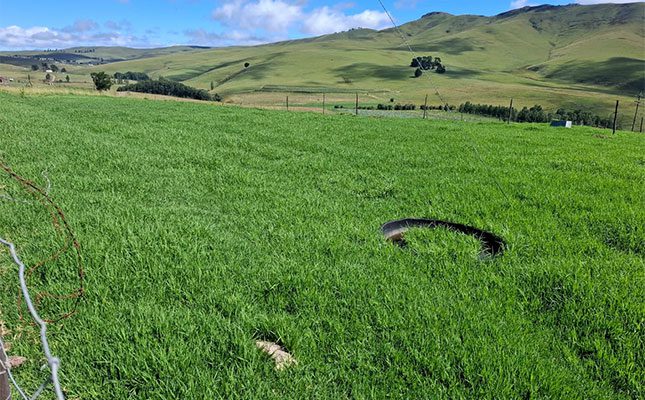South Africa’s emerging sheep farmers are an essential part of the country’s agricultural tapestry. Often working under resource-constrained conditions in communal lands or smallholdings, these farmers face unique challenges but also hold significant potential for growth — especially in the wool and meat production sectors.
One of the leading voices in guiding this transformation is Willem Goosen, Production Adviser at the National Wool Growers’ Association (NWGA), based in the Eastern Cape. According to Goosen, the key to success for emerging farmers is not more sheep, but better sheep.
“You don’t need a big flock to succeed. You need healthy, productive animals managed the right way. It’s about working smarter, not harder,” he says.
This editorial explores expert strategies that can help emerging sheep farmers build thriving, sustainable enterprises — even on limited land.
Quality Over Quantity: Why Better Flocks Matter
Many smallholder and communal farmers still measure success by flock size. However, Goosen emphasizes that this approach can strain resources and lead to underperformance, especially in areas where grazing is already limited.
Instead, farmers are encouraged to prioritise flock quality. Productive sheep not only yield more wool per animal but also give birth to stronger lambs, improving both meat output and overall farm income.
“A ewe producing 2.5kg of wool and raising a healthy lamb is far more valuable than two ewes producing poor wool and weak lambs,” says Goosen.
The difference in income can be significant. Inferior wool may only fetch R30 per kilogram, while premium wool from a quality ewe can sell for R80 to R110 per kilogram. That’s nearly four times the value — with less pressure on grazing and feed.
Strategic Breeding: The Key to Better Lambs and Wool
A major issue in many communal areas is the reliance on natural mating cycles, which often result in lambs being born in June or July, the coldest and driest time of the year. This timing contributes to high lamb mortality, poor growth rates, and nutritional stress on ewes.
Goosen recommends a more deliberate approach:
Mating in April or May ensures that lambs are born in October or November, when the veld is green and grazing is abundant following the first spring rains. This means lambs grow faster, are more resilient, and require less supplementary feeding.
“The first rains bring fresh, nutritious grass — perfect for lactating ewes and growing lambs,” he says.
Implementing a breeding calendar not only improves lamb survival but also helps farmers plan their feed, marketing, and shearing activities more effectively.
Feeding Strategies for All Seasons
Feeding is one of the biggest expenses in sheep farming — but it can also be managed wisely. Goosen stresses the importance of seasonal planning, particularly when it comes to purchasing and storing feed.
Many communal farmers grow crops like maize or oats in summer. While the grain is often reserved for household consumption, the stover (stalks and leaves) can be used to feed sheep and goats during the dry winter months.
“The maize cobs are stored and used to feed small stock like sheep. The rest is used by cattle. Nothing goes to waste,” says Goosen.
To reduce feed costs, Goosen advises buying lucerne and grass bales in summer, when prices are at their lowest. A bale of lucerne that costs R70–R90 in summer may cost up to R150 in winter.
Farmers who plan ahead can therefore cut feed costs in half, and mix lucerne with maize meal or other roughage to provide balanced nutrition during the lean months.
Identifying and Managing Nutritional Deficiencies
Nutritional deficiencies often manifest first in lambs. Goosen explains that bloating, weakness, and diarrhoea are signs that lambs are not getting enough milk — often because their mothers are underfed.
Even more concerning is when ewes abandon their lambs, driven by the need to find food for themselves.
“It’s not neglect — it’s survival. The ewe just can’t feed both herself and her lamb. That’s why planned feeding and mating are so important,” Goosen says.
By preparing feed in advance and aligning breeding cycles with seasons of abundance, farmers can avoid these heartbreaking losses and improve flock performance.
Grazing and Infrastructure: Two Major Challenges
In communal areas, many farmers do not own land or permanent infrastructure. Grazing is shared, and flocks are moved daily by herders. This makes it difficult to implement structured rotational grazing or build permanent lambing pens and shelters.
Goosen acknowledges the challenge, but encourages farmers to improve management within the constraints they face. For example, rotating grazing on an informal schedule, avoiding overgrazed areas, and using temporary fencing or herder strategies can still make a big difference.
The Department of Agriculture and local municipalities are also stepping in to assist. Shearing sheds and handling facilities are being constructed in some regions — provided farmers apply and meet the necessary criteria.
The NWGA is also actively involved in projects to improve infrastructure, genetics, and access to markets.
Government and Industry Support: A Boost for Progress
Emerging sheep farmers are not alone in their journey. Several programmes offer assistance:
- NWGA Breeding Programmes help farmers access superior rams at subsidised prices.
- SACTA (South African Cultivar and Technology Agency) supports sustainable breeding practices.
- Cape Wools SA, animal health companies like Zoetis, and wool brokers provide training, veterinary support, and access to markets.
- The Department of Agriculture’s Animal Improvement Project enables qualifying farmers to apply for genetically superior animals.
These partnerships are critical in helping farmers overcome barriers to entry and scale their businesses sustainably.


Building Resilience Against Climate Change
Climate change is having a direct impact on livestock farmers, particularly in arid and semi-arid regions. Prolonged droughts, unpredictable rainfall, and poor veld conditions are becoming more frequent.
To address this, Goosen and the NWGA are encouraging farmers to adopt climate-resilient practices:
- Veld resting and rotational grazing to preserve plant cover
- Drought-tolerant forage crops in dry zones
- Strategic feed storage and alternative feed sources
The goal is to help farmers adapt and thrive, even under changing environmental conditions.
Efficiency is Profit
Willem Goosen’s advice boils down to one simple message: Efficiency equals profitability. A small flock of high-quality sheep, supported by sound management, can yield more income than a large flock of underperforming animals.
By focusing on strategic breeding, smart feeding, seasonal planning, and seeking available support, emerging sheep farmers can transform their operations from survival-mode into sustainable, growing businesses.
“Farmers who invest in quality animals actually make more money with fewer sheep. With the right mentorship, training, and infrastructure, we can help them achieve lasting success,” Goosen concludes.
Emerging sheep farmers in South Africa can unlock significant value by focusing on selective breeding, seasonal planning, efficient feeding, and improved infrastructure. Through support from organisations like the NWGA and the Department of Agriculture, and a shift in mindset from quantity to quality, smallholders can build sustainable, profitable enterprises — even on limited land.